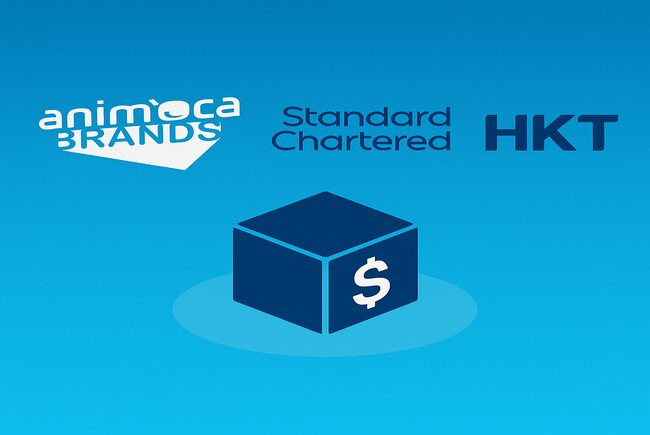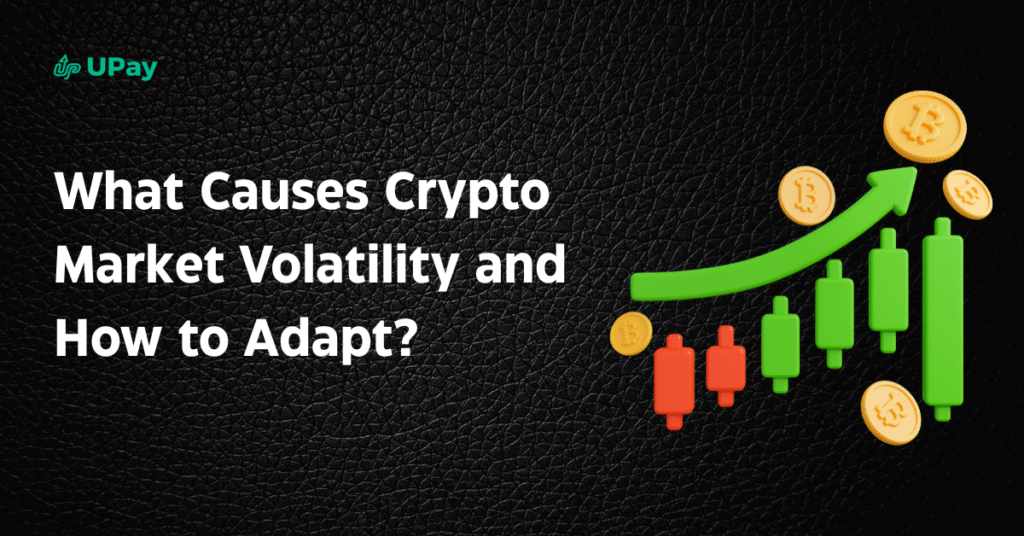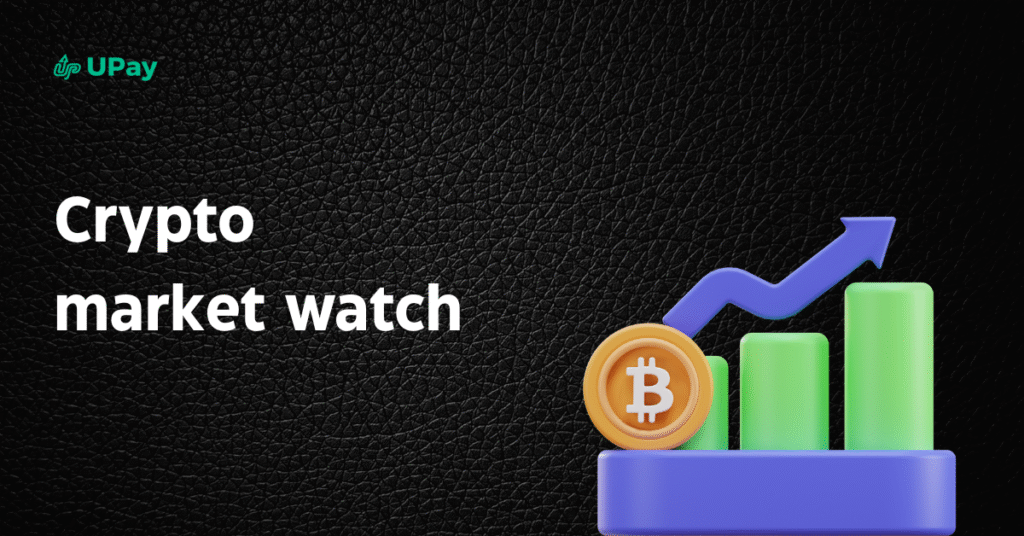Animoca Brands, Standard Chartered, and HKT Form Joint Venture for Stablecoin Licensing in Hong Kong

Animoca Brands has partnered with Standard Chartered Bank (Hong Kong) Limited and HKT to create a joint venture, Anchorpoint Financial Limited, aimed at developing licensed stablecoins in the city. The company said Anchorpoint submitted a notice of intent to the Hong Kong Monetary Authority (HKMA) to apply for a stablecoin issuer license on Aug. 1, the date the city’s Stablecoins Ordinance took effect. License Application Under New Ordinance The newly enacted Stablecoins Ordinance establishes a regulatory framework for fiat-referenced stablecoins in Hong Kong. Anchorpoint’s application signals one of the first formal steps under the legislation, which is designed to regulate the issuance and operation of such digital assets. According to the companies, the joint venture will focus on building a compliant model for stablecoin issuance. The aim is to integrate stablecoins into financial services in a manner that aligns with Hong Kong’s regulatory standards. Testing in HKMA Sandbox Since July 2024, the three companies have been participating in the HKMA’s stablecoin issuer sandbox program, a controlled environment for testing stablecoin-related services. The program examines potential roles for stablecoins in payments, settlement, and financial markets, with an emphasis on linking blockchain-based systems with traditional banking infrastructure. The HKMA has positioned the sandbox as part of its broader strategy to evaluate risks and benefits of integrating stablecoins into Hong Kong’s financial system. Regulators have indicated that stablecoins could have applications in cross-border payments and as a bridge between Web3 and traditional finance. Industry Context The move comes as jurisdictions globally work to regulate stablecoins, which are designed to maintain a fixed value by linking their worth to fiat currencies. Advocates argue that regulatory clarity can encourage broader institutional adoption, while critics caution about risks related to reserve management and financial stability. Hong Kong has been positioning itself as a hub for digital assets, introducing licensing regimes for virtual asset service providers and implementing guidelines for tokenized products. The Stablecoins Ordinance is the latest addition to this regulatory framework, with the HKMA overseeing licensing, reserve requirements, and operational standards for issuers. Anchorpoint’s application will undergo the HKMA’s review process, which includes assessments of capital adequacy, governance, and risk management systems. No timeline has been provided for when a license decision will be made.
What Are Perpetual Futures and How Do They Work?

What if you could trade crypto futures that never expire anytime, anywhere, without worrying about rolling over contracts? That’s the idea behind perpetual futures. These contracts let you take long or short positions on crypto assets without worrying about expiry dates, while offering built-in leverage and real-time funding rates to keep prices aligned with the spot market. They’re flexible, fast, and widely used, but they’re not without risks. In this article, we’ll break down exactly how perpetual futures work, look into their key features, top trading strategies, risks to watch out for, and the best platforms to trade them on. Even if you’re new to derivatives or looking to sharpen your edge, this article covers everything you need to know. Key Takeaways Definition of Perpetual Futures Perpetual futures are a type of derivative contract that allows you to buy or sell an asset without a set expiry date. Unlike traditional futures contracts that expire on a specific date, perpetual futures can be held indefinitely as long as the trader maintains the required margin. These contracts are most common in the crypto market, where traders use them to speculate on the future price of assets like Bitcoin, Ethereum, and other digital currencies. Key Components of Perpetual Futures Before placing any trades, you need to know the major components that drive perpetual futures markets. 1. Underlying Asset The underlying asset in a perpetual futures contract is the real asset that the contract is based on. In crypto, this could be Bitcoin (BTC), Ethereum (ETH), Solana (SOL), or any other digital asset listed on the exchange. When traders buy or sell a perpetual futures contract, they’re not buying the actual cryptocurrency. Instead, they’re speculating on the future price movement of the underlying asset. Let’s say you trade a BTC perpetual futures contract. This means you’re betting on whether Bitcoin’s price will rise or fall. If you go long (buy), you profit when the price goes up. If you go short (sell), you profit when the price drops. The contract itself doesn’t expire, so your position stays open as long as you meet margin requirements and funding payments. Most platforms price the contract based on the spot market of the underlying asset. The actual BTC you’re trading is never delivered. Everything is settled in cash or in stablecoins like USDT or USDC, depending on the type of contract. So it’s important to understand the value and volatility of the underlying asset before opening a position. 2. Leverage and Margin Requirements Leverage lets you control a large position with a smaller amount of capital. This is one of the main features that makes perpetual futures attractive. For example, with 10x leverage, you can open a $10,000 position with just $1,000 in margin. Leverage allows you to increase your potential gains, but it also increases your risk. To open a position, you need to provide an initial margin. This is the minimum amount required to enter the trade. There’s also a maintenance margin, which is the minimum balance you need to keep the position open. If your balance falls below this level, your position will be liquidated. Each platform sets its own margin requirements based on the asset and market conditions. Using high leverage is risky, especially in a volatile market like crypto. Small price movements can lead to large losses. That’s why it’s important to use leverage carefully. Many traders start with low leverage like 2x or 3x, while learning how perpetual contracts work and managing their risk. 3. Mark Price vs. Last Price Exchanges use two prices to manage perpetual contracts: the last price and the mark price. The last price is the most recent transaction on the exchange. It shows what the market just traded at. However, it can be affected by sudden spikes or manipulation, especially in low-liquidity markets. The mark price is used to determine whether a trader’s position should be liquidated. It is based on a combination of the index price (spot price from multiple exchanges) and a funding basis. This helps prevent unfair liquidations that could happen if someone tries to push the last price too far in one direction. For example, if the last price of Bitcoin futures suddenly jumps to $80,000 due to a single trade, the platform won’t liquidate short positions based on that price. Instead, it looks at the mark price, which might still be closer to $67,000. This keeps the market fair and avoids unnecessary liquidations caused by price manipulation. 4. Funding Rate Mechanism Perpetual futures don’t expire, so a funding rate mechanism is used to keep their price close to the spot price. This is a fee that is paid between traders either from long to short, or short to long, depending on the price difference between the perpetual contract and the underlying asset. When the contract trades above the spot price, the funding rate is positive. This means long traders pay a fee to short traders. When the contract trades below the spot price, the rate becomes negative, and short traders pay long traders. These payments happen every few hours, usually every 8 hours, and are automatically handled by the platform. For example, if the BTC perpetual is trading at $68,500 and the spot BTC price is $68,000, the funding rate may be 0.01%. If you hold a long position, you’ll pay 0.01% of your position value to short traders. If you’re short, you receive that amount. Knowing the funding rate is important because it can affect your returns, especially in long-term trades. 5. Liquidation and Maintenance Margin Liquidation happens when your position no longer has enough margin to support it. This occurs if the market moves against you and your margin balance drops below the maintenance level. When this happens, the platform automatically closes your position to prevent further losses. Each exchange sets a different maintenance margin depending on the asset and your position size. The higher your leverage, the closer your liquidation price will be to your entry price.
What Causes Crypto Market Volatility and How to Adapt?

What makes the price of Bitcoin rise one month and crash the next? Crypto market volatility remains one of the most discussed and misunderstood features of digital assets. This article breaks down what drives these sharp price swings, how they impact the wider crypto ecosystem, and what could help stabilize the market over time. Key Takeaways Definition of Market Volatility Market volatility refers to the degree of price movement in a financial market over a specific period of time. When a market is volatile, prices tend to change quickly and by large amounts. In crypto markets, this means the price of a coin or token can rise or fall sharply within minutes or hours. Volatility is often measured using indicators like standard deviation or average true range, but it’s majorly, it simply describes how much prices move up or down in a short time. Measuring Volatility in the Crypto Market To understand crypto price swings, it’s important to know how market volatility is measured and tracked. Common Volatility Metrics Volatility in crypto is measured using tools and indicators that help traders understand how much a coin’s price moves over a specific period. One of the most common ways to measure this is historical volatility, which looks at past price movements. It is calculated using standard deviation, a method that shows how much the price of a coin differs from its average. If a coin’s price swings widely over time, its historical volatility will be high. Traders often look at this number to understand how risky an asset might be before making decisions. Another popular metric is implied volatility, often used in crypto options trading. This shows how much the market expects a coin’s price to move in the future. It is based on the price of options contracts and gives traders a sense of the expected risk. High implied volatility means traders are expecting big price moves, while low implied volatility suggests stability. Although more common in traditional finance, this measure is becoming more relevant in crypto as more platforms offer options and other derivatives. Other tools like the Average True Range (ATR) and Bollinger Bands also help traders track volatility. ATR shows how much a coin moves on average per day, and is helpful for setting stop-loss levels. Bollinger Bands use a moving average and two standard deviations to create bands above and below the price. When prices move outside these bands, it signals increased volatility. These tools are widely used in technical analysis and give simple visual cues about how volatile a market is. Tools and Platforms for Volatility Tracking Many traders rely on platforms that provide real-time data and charts to track market volatility. These tools offer easy ways to view historical movements, analyze trends, and compare the behavior of different cryptocurrencies. Some of these platforms are beginner-friendly, while others offer more detailed analytics for experienced users. Choosing the right one depends on your level of experience and trading style. Below are a few trusted tools used by traders and investors to monitor crypto volatility. 1. CoinMarketCap CoinMarketCap is one of the most widely used platforms for tracking cryptocurrency prices and market data. While it is best known for showing live prices and rankings, it also offers detailed charts where users can see historical price movements. You can get a quick sense of how volatile it is by checking a coin’s daily or weekly percentage changes. CoinMarketCap also provides metrics like 24-hour trading volume, market cap, and circulating supply, which can help put price changes into context. A sudden increase in trading volume, for example, can be a sign of rising volatility. The platform’s charting tools allow users to switch between different timeframes to view how much a coin moves during a specific period. Although CoinMarketCap doesn’t have advanced volatility indicators like Bollinger Bands or ATR built-in, it gives a clear picture of how a coin has performed over time. For beginners or casual investors, it is a simple and accessible place to start monitoring market behavior. 2. TradingView TradingView is a powerful charting platform used by both crypto and traditional market traders. It offers a wide range of tools to track volatility, including Bollinger Bands, Average True Range, and custom scripts created by the community. You can apply these indicators to any crypto chart to see how much the price is fluctuating. What sets TradingView apart is its ability to create and save custom chart setups. You can track multiple coins, apply different volatility indicators, and set alerts for price changes. This makes it useful for both short-term traders and long-term investors who want to stay ahead of sudden market movements. TradingView also includes community insights, allowing users to share analysis and ideas. By combining personal chart setups with expert opinions, traders can better understand what’s driving volatility in the market. For anyone serious about crypto trading, this platform offers deep insights and flexibility. 3. CoinGecko CoinGecko is similar to CoinMarketCap in how it provides price charts, market data, and volume metrics. It also tracks percentage changes over various timeframes, giving a quick overview of short-term and long-term volatility. In addition, it includes useful stats like “volatility rank,” which compares the price swings of different coins. CoinGecko allows users to view market cap dominance, historical data tables, and liquidity scores. These features help investors understand the stability of a coin. For example, a coin with high trading volume and liquidity is less likely to face wild price swings from a single trade. This makes it easier to manage risk. The platform is especially popular among DeFi users, as it lists many tokens that may not be found on other tracking sites. If you’re looking to measure volatility in both popular and lesser-known tokens, CoinGecko is a solid platform to use. 4. Glassnode Glassnode focuses on on-chain data and provides insights into how market activity is affecting price movements. While it doesn’t use standard technical indicators like ATR or Bollinger Bands, it shows investor behavior, wallet
Crypto Market Watch 2025: Trends, Insights & Top Gainers to Watch

From AI-powered altcoins to Ethereum staking plays, the crypto market watch in July 2025 is buzzing with surprising winners and red-flag losers. Bitcoin has found relative stability, but under the surface, whale wallets are shifting positions, DeFi is seeing fresh capital, and memecoins are once again making noise. The current Market Watch covers the strongest performers, biggest letdowns, emerging trends across NFT and DeFi sectors, institutional sentiment, and the macro signals that matter. Whether you’re trading daily or building long-term conviction, this breakdown will keep you one step ahead. Key Takeaways Top Performing Coins This Week (with Stats) While Bitcoin remains steady around the $118K mark, several altcoins have outperformed the majors this week, showing renewed investor interest in specific sectors, particularly AI, gaming, and Layer 2. As of July 2025, here are the top 5 gainers (A week performance): Coin Week Change % Sector FET +28.5% AI Infrastructure RNDR +25.2% GPU/Metaverse LDO +22.8% ETH Staking SUI +20.4% Layer 1 Blockchain MEMEAI +19.7% AI Memecoin Analysts believe the surge in AI-linked tokens is partly driven by Meta’s recent AI rollout announcement and rising GPU demand across decentralized rendering networks. Additionally, rising ETH staking activity ahead of the Shanghai 2.0 update is pushing LDO and RocketPool (RPL) upward. These gains, however, are occurring in a backdrop of reduced altcoin liquidity, which can exaggerate both rallies and retracements. Traders are advised to watch funding rates and open interest closely in case of reversal setups. Biggest Crypto Losers of July, 2025 Not every project is riding the July tailwinds. Several coins posted negative weekly returns despite overall market stability, raising concerns about sector rotation and waning momentum. Here are the top 5 underperformers as at July, 2025: Coin % Loss Sector AR -14.5% Decentralized Storage MATIC -12.8% Layer 2 Scaling FLOW -11.3% NFT Infrastructure PEPE2.0 -10.7% Memecoin FIL -9.6% Storage Arweave (AR) and Filecoin (FIL) declined due to slowing usage metrics and competition from newer, faster storage protocols. MATIC’s dip followed concerns over declining TVL on Polygon zkEVM. Meanwhile, NFT-native tokens like FLOW continue to lose ground as metaverse demand cools off, despite small gains in Web3 gaming. DeFi Projects to Watch in 2025 As the broader market stabilizes, DeFi protocols are starting to draw attention again, not from retail hype, but from real yield, new tokenomics, and Layer 2 integrations. Here are three DeFi standouts currently, as at July 2025: 1. Lido Finance (LDO) LDO continues its upward climb, driven by increased ETH staking demand and anticipation of the Shanghai 2.0 upgrade, which allows improved validator rewards and instant liquidity. On-chain data from Glassnode shows Lido now controls ~35% of all staked ETH. The upcoming SSV Lido Module (SSVLM) is in development, introducing decentralized validator clusters to enhance staking decentralization and resilience on Ethereum’s Holesky testnet before a Q3 mainnet launch. 2. GMX Over $130–140 billion total trading volume since inception, with daily revenues ranging from $80K to $500K during volatility spikes, often paying out 5–15% APR to stakers. This decentralized perpetual exchange on Arbitrum is showing renewed trading volume, as traders seek alternatives to centralized platforms after the Bybit hack. GMX’s fee-sharing model is attracting DeFi-native whales again. 3. Pendle (PENDLE) Pendle’s tokenized yield product is gaining traction as institutions explore fixed-rate crypto instruments. TVL has crossed $600M, up 15% from last week. These projects aren’t surging on memes, they’re delivering protocol revenue, real users, and DeFi-native innovation. Its expansion into multi-chain support (Arbitrum, Base, Sonic, targeting Solana Q3 2025), Aave v3 integration for PT-USDe collateral, and institutional product pipeline shows its strategic roadmap for institutional on-chain fixed income. The Recovery of NFT & Metaverse Tokens in 2025 After a slow start to the year, NFT and metaverse tokens are finally showing signs of resurgence, driven not by speculative hype, but by meaningful adoption and narrative shifts. 1. Immutable X (IMX) 0-3IMX climbed +9.2% this week, fueled by growing interest in Web3 gaming and new adoption metrics. The platform now hosts 380+ games, and Q1 2025 saw a 9× jump in new projects; one high-profile partnership with NetMarble helped IMX lead the Layer‑2 gaming segment. With zero‑gas NFT minting and StarkEx security, IMX bridges mainstream gaming and blockchain. Positive regulatory signals toward Ethereum L2s are further lifting sentiment. 2. ApeCoin (APE) 1067-1APE rebounded +4.7%, bolstered by migration to ApeChain staking, which launched in April 2025. This update added flexible rewards and improved governance, drawing renewed community interest . Transitioning staking off Ethereum reduced gas friction and increased accessibility. Whale wallets and on-chain TVL tracked stronger, showing institutional-grade interest. 3. Decentraland (MANA) & Sandbox (SAND) 1343-2Both tokens remained largely rangebound, but Metaverse Fashion Week in April 2025 spurred buzz: global brands showcased virtual fashion, and Decentraland introduced a theme Infinite Identities, attracting over 47 designers. These high-profile events underline the growing intersection of virtual spaces with real-world fashion and brand identity. Sustained corporate collaborations suggest a slow-but-steady narrative rebuild. Institutional Moves and ETF Developments in 2025 While the retail side of crypto buzzed over memecoins and DeFi trends, institutional strategies shifted in July 2025. The U.S. SEC’s greenlight on multiple spot Ethereum ETFs in June spurred $2.5B in inflows within weeks, per CoinDesk. This pushed Ethereum’s price up 14% in early July. Top firms like BlackRock, Fidelity, and ARK Invest continued to expand their Web3 portfolios through partnerships, while Franklin Templeton quietly increased their investment into tokenized U.S. treasuries via Base and Polygon chains. Additionally, tokenization platforms such as Matrixport and Backed Finance gained traction with European asset managers, especially those interested in real-world assets (RWAs) and yield-bearing stablecoins. According to a July report from K33 Research, ETH-focused institutional products outpaced BTC products by 38% in terms of new inflows this month. BlackRock and Fidelity’s Strategic Shift to Ethereum and RWAs in the Crypto Market In July 2025, institutional giants BlackRock and Fidelity have pivoted their crypto investment focus more toward Ethereum (ETH) and tokenized real-world assets (RWAs). While these firms initially held large BTC positions, the crash triggered a broader

